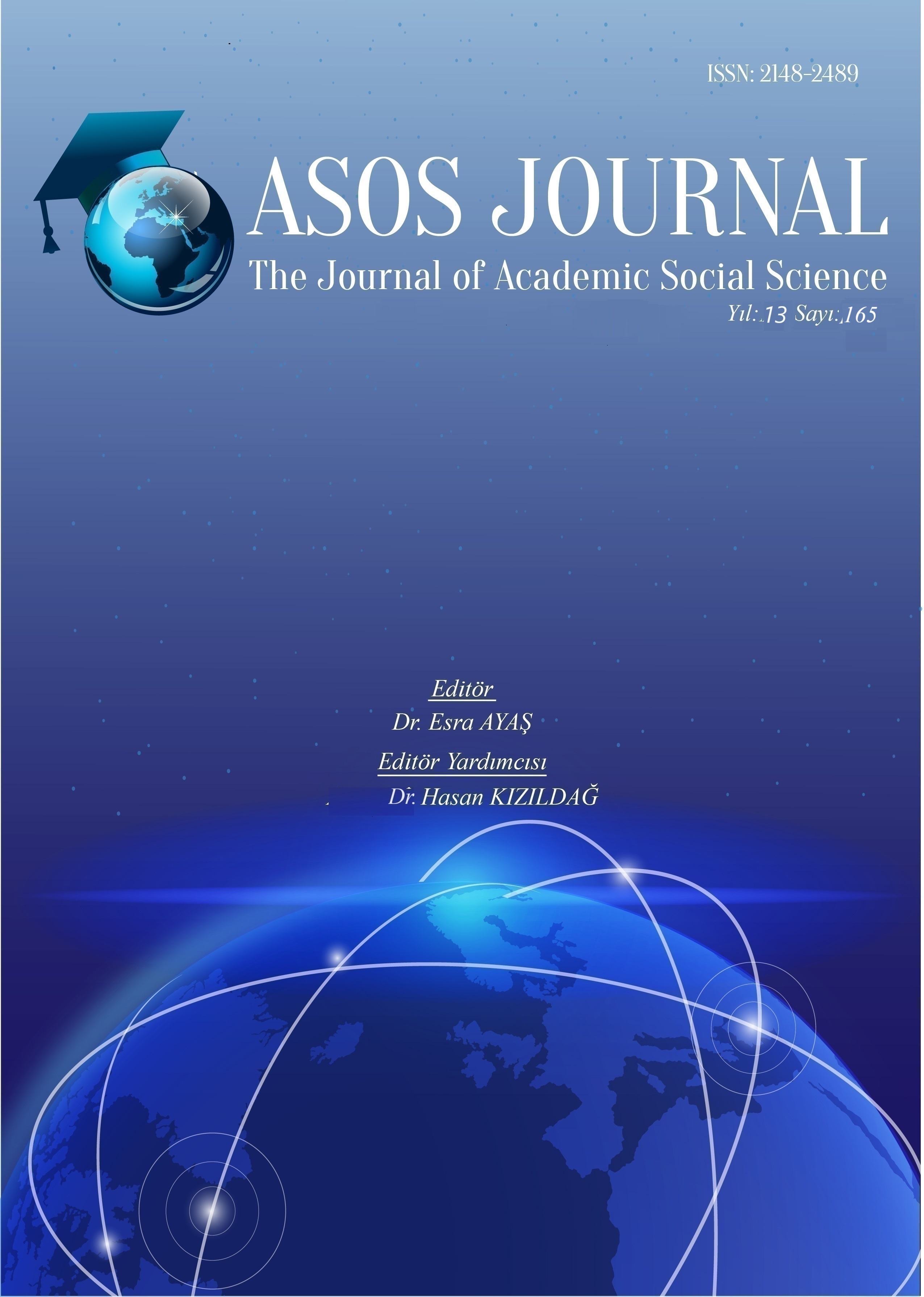Author :
Abstract
Jun Kaneko, Japonya kökenli, anıtsal seramik heykel alanında tanınmış bir sanatçı olarak bilinmektedir. Sanatçı çalışmalarını, her şeyin diğer nesnelerden veya çevreden etkilendiği varsayımıyla yürütmektedir. Üretimlerinde seramik çamuru yani kırmızı kil kullanan sanatçı, var olan imgeleri soyut ve metaforik bir anlatımla ifade etmektedir. Sanatçı yaşamı boyunca farklı malzemeler kullanarak, disiplinlerarası bir üretimle, çok yönlü bir sanat anlayışını benimsemiştir. Kaneko eserlerinde puantiye, çubuk ve kiremit gibi desenler kullanmıştır. Kaneko eserlerinde yine Batı ve Doğu sentezi oluşturarak, farklı kültürleri dengeli bir şekilde estetik öğelerle bütünleştirmiştir. Amerikan ve Japon kültürel öğelerinin kullanımında oldukça başarılı bir bütünlük sağlamıştır. Figürleri çoğunlukla Japon kültürü ve mitolojisiyle bağdaştırılmıştır. Seramik heykellerinde soyut formları ve farklı desenleri bir araya getirerek izleyicinin farklı bakış açısı geliştirmesini sağlamıştır. Kullandığı soyut desenler ve dokuların yarattığı duygusal etkinin, eserin anlamında ve bakış açısında farklılıklara ve çeşitliliğe neden olduğu görülmektedir. Sanatçının seramik heykellerinde yer alan figürlerin çoğunlukla ruhani bir niteliğe sahip olması, sanatçının Japon kültürü ve mitolojisinden etkilendiğini göstermektedir. Jun Kaneko’nun minimalist seramik heykelleri üzerine adlı bu makalede, sanatçının tekniği ve ifadesine vurgu yapılarak ayrıntılı bir şekilde incelenmiştir. Kaneko’nun sanatsal gelişimi ve sanatsal yorumlarının incelendiği bu makalede, seramik çamuru kullanarak tasarladığı anıtsal boyutlardaki seramik heykelleri de incelenmiştir. Jun Kaneko'nun sanat anlayışına farklı bir bakış açısı sunan bu makalede sanatçının kullandığı formlar, izleyiciyi eserle bütünleştirmekte ve izleyicinin düşünce deneyimini aktifleştirmektedir.
Keywords
Abstract
Jun Kaneko is known as a renowned artist of Japanese origin in the field of monumental ceramic sculpture. The artist carries out his work with the assumption that everything is affected by other objects or the environment. Using ceramic clay, namely red clay, in his productions, the artist expresses existing images with an abstract and metaphorical narrative. Throughout his life, the artist has adopted a multifaceted artistic approach with an interdisciplinary production using different materials. Kaneko has used patterns such as polka dots, sticks and tiles in his works. Kaneko has again created a synthesis of the West and the East in his works, integrating different cultures in a balanced way with aesthetic elements. He has achieved a very successful integrity in the use of American and Japanese cultural elements. His figures are mostly associated with Japanese culture and mythology. He has enabled the viewer to develop a different perspective by bringing together abstract forms and different patterns in his ceramic sculptures. It is seen that the emotional effect created by the abstract patterns and textures he uses causes differences and diversity in the meaning and perspective of the work. The fact that the figures in the artist's ceramic sculptures mostly have a spiritual quality shows that the artist is influenced by Japanese culture and mythology. In this article titled -A minimalist discourse in ceramic sculpture and the example of Jun Kaneko-, the artist's technique and expression are examined in detail with an emphasis. In this article where Kaneko's artistic development and artistic interpretations are examined, the monumental ceramic sculptures he designed using ceramic clay are also examined. In this article, which offers a different perspective on Jun Kaneko's understanding of art, the forms used by the artist integrate the viewer with the work and activate the viewer's thought experience.





